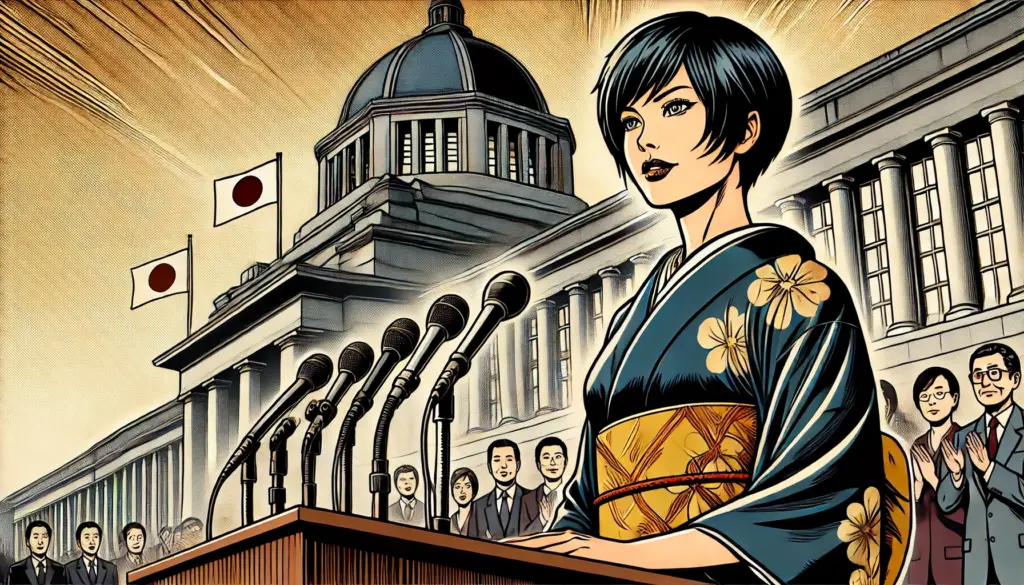
With the Liberal Democratic Party (LDP) suffering a historic defeat in the July 2025 House of Councillors election, pressure is mounting on Prime Minister Shigeru Ishiba to step down. As speculation grows over his possible resignation, attention is rapidly shifting to the party’s next potential leader — and for the first time in Japan’s political history, that candidate might be a woman: Sanae Takaichi
If elected, Takaichi would become Japan’s first-ever female Prime Minister — a landmark moment for a nation often criticized for its male-dominated politics. But who exactly is Sanae Takaichi? And why is she frequently labeled a “right-wing” politician?
Who Is Sanae Takaichi?
Sanae Takaichi (born March 7, 1961, in Nara Prefecture) has long been a prominent and sometimes controversial figure within Japanese politics. A member of the Liberal Democratic Party, she previously served in key roles such as Minister for Internal Affairs and Communications and Minister in charge of Economic Security.
She is known for her assertive communication style, nationalist views, and consistent advocacy for constitutional revision and defense policy strengthening. Takaichi’s political career began after studying at Matsushita Institute of Government and Management and working in the U.S. Congress as a staff researcher — experience that sharpened her views on Japan’s international standing and defense posture.
She ran in the LDP leadership race in 2021 and came in second, demonstrating significant support from conservative party members. That momentum could now return — and perhaps with even more force.
Why Is She Considered “Right-Wing”?
Takaichi’s political positions have often placed her firmly on the conservative end of Japan’s political spectrum. Some of the reasons why she is labeled “right-wing” include:
- Visits to Yasukuni Shrine: Takaichi has openly visited the controversial Yasukuni Shrine, which honors Japan’s war dead, including Class-A war criminals. These visits have drawn sharp criticism from neighboring countries and liberal groups.
- Support for Constitutional Revision: She has been a vocal supporter of revising Article 9 of Japan’s pacifist constitution to allow for more proactive self-defense measures, a move backed by Japan’s right-leaning factions.
- Traditional Family Values: Takaichi has promoted policies that favor traditional family structures and has expressed skepticism toward LGBTQ+ rights expansion and feminist reforms.
- Media Control Remarks: In 2016, she stirred controversy by suggesting that broadcasters who “repeatedly violate political fairness” could be shut down — a comment interpreted by many as authoritarian.
Her Strengths: Why Takaichi Could Win
Despite (or because of) her hardline stances, Takaichi has built a loyal following, particularly among Japan’s aging conservative voter base. Key reasons why she could secure leadership include:
- Backed by Abe’s Legacy: The late Prime Minister Shinzo Abe publicly supported her, and many within the party still follow his political vision.
- Policy Clarity: Unlike many fence-sitting politicians, Takaichi takes clear stances. This decisiveness appeals to voters tired of ambiguity.
- Experienced Cabinet Member: With multiple ministerial posts under her belt, she has the credentials needed to take charge.
Barriers to Becoming Prime Minister
However, Takaichi’s path is not without obstacles:
- Gender Bias: Japan consistently ranks low in global gender equality reports. While her gender could make her a symbol of progress, internal party dynamics are still deeply patriarchal.
- Public Image: Her confrontational tone and nationalist reputation may alienate centrist and younger voters.
- International Relations Risk: A hawkish stance might strain ties with neighbors like China and South Korea.
What’s Next?
If Prime Minister Ishiba resigns — a decision many expect within weeks — the LDP will hold another internal leadership election. As the runner-up in the previous race, Takaichi is a top contender.
Should she win, she wouldn’t just make history as Japan’s first female Prime Minister — she would also signal a shift in the nation’s political tone: more assertive, more traditionalist, and potentially more polarizing.
Final Thoughts 💬
Whether one views her as a trailblazer or a hardliner, Sanae Takaichi represents a turning point in Japanese politics. If she takes the reins, Japan’s political landscape — and its global image — may be in for a dramatic transformation.



















































